Aging Horses By Their Teeth By View – Right Side
Note the following:
- In the left and right views, the tongue can be seen pressed against the backs of the incisors and as the horse ages, the incisors are pushed more forward. I believe this is from the tongue pushing them out over time.
- In the left and right views of the male horses, note the shaping of the canine teeth due to the stropping of the tongue which forms the dagger like shape.
This is a long process if you are going through the whole set. The idea is to notice all the differences and variability seen within each age. As the age becomes greater, notice the increased variability. Also note that in some horses, the left and right sides are different yielding a different age. This is caused by the horse’s tongue movement, jaw movement or both.
2 year olds – all incisor teeth are deciduous
3 year olds – the middle and corner incisors are deciduous (blood is from the removal of a cap)
4 year olds – only the corner incisor is deciduous though some permanent teeth are erupting and some have the corner incisors in wear already.
5 year olds – most have all their permanent incisors in wear but a few do not. Note four horses have erupted a lower canine tooth.
6 year olds – all incisors are permanent except for 1 horse with a lower corner incisor firmly in place with a long root seen under the gum. 7 of these horses have erupted lower canines with some of them also showing upper canines. Remember canines are almost always in male horses.
7 year olds – The “7 year hook” is forming on some of these corner incisors. Note the relaxed space and the filling of the tongue around the incisor and canines.
8 year olds – the corner “7 year hook” is not seen prominently. Note how the tooth angle is variable with some more slanted. This will increase with age. There is gum hypertrophy around some of the canines.
9 year olds – The tooth angle increases. A “7 year hook” is seen. The nub of Galvayne’s Groove is starting at the gum line of several corner incisors.
10 year olds – The variability of Galvayne’s Groove is clearly evident from no groove to extending half way down the corner incisor.
11 year olds – the “11 year hook” is not seen but in one horse. There is gum hypertrophy around 1 canine with blood indicating early onset of EOTRH. Tooth angles and Galvayne’s Groove are variable.
12 year olds – tooth angle and wear are variable. Gum recession, canine gum hypertrophy and gum indentations between the incisor roots are becoming evident and are early signs on EOTRH.
13 year olds – tooth angle and wear are variable. Gum recession, canine gum hypertrophy and gum indentations between the incisor roots are becoming evident and are early signs on EOTRH.
14 year olds – tooth angle and wear are variable. Gum recession, canine gum hypertrophy and gum indentations between the incisor roots are becoming evident and are early signs on EOTRH.
15 year olds – Galvayne’s Groove should be half the length of the corner incisor but in these images it runs from not being evident to almost the full length of the tooth.
16 year olds – tooth angle and wear are variable. Gum recession, canine gum hypertrophy and gum indentations between the incisor roots are becoming evident and are early signs on EOTRH.
17 year olds – Galvayne’s Groove is variable.
18 year olds – Galvayne’s Groove is variable. There is some gum recession at the incisors of one horse that are early indicators of EOTRH.
19 year olds – variable tooth angles and Galvayne’s Groove, a corner incisor hook on one, gum recession with indentations between the incisor roots – EOTRH signs.
20 year olds – Galvayne’s Groove is supposed to run the full length of the corner upper incisor tooth but in these horses it is variable. EOTRH signs are seen in many of these horses.
21 year olds – note in these senior horses the increasing tooth angle and the placement of the tongue behind the incisors driving them forward with tens of thousands of pushes with each bite of food throughout the day.
22 year olds – 1 case of EOTRH with destruction and loss of upper and lower incisors making aging impossible other than to say “senior horse.”
23 year olds
24 year olds
25 year olds
26 year olds
27 year olds
28 year olds
29 and 30+ year olds – EOTRH is affecting many of these horses including the one horse with red dots on the gums and one missing an incisor.
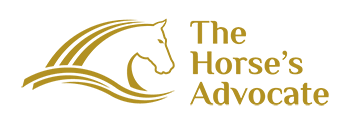
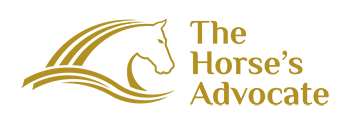
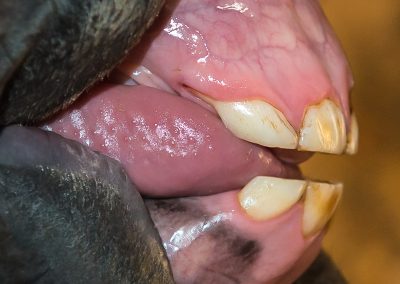






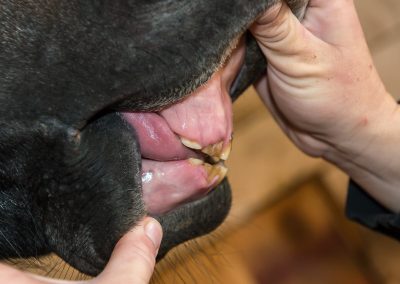

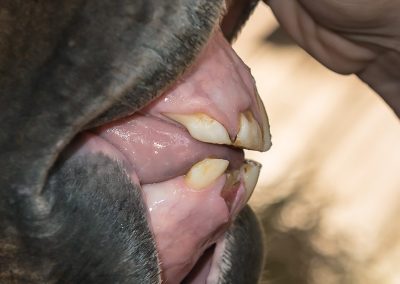

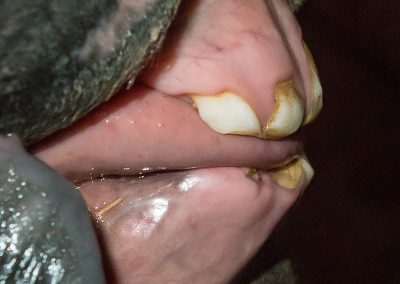


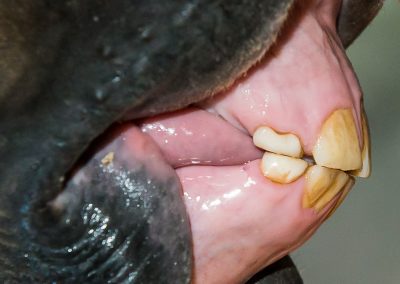

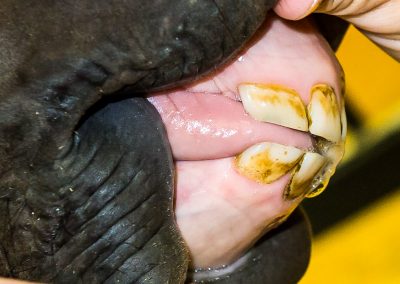

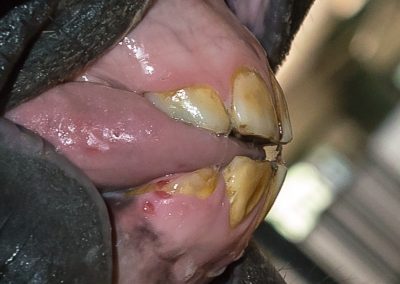

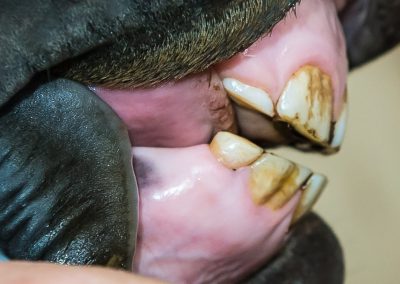
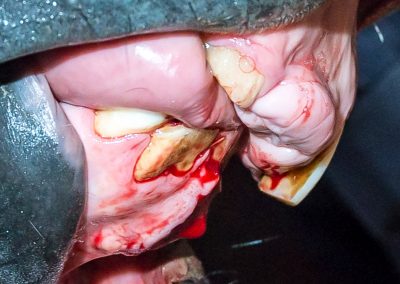
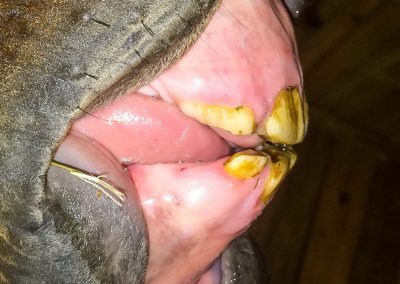

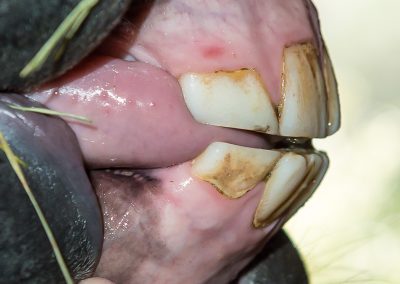

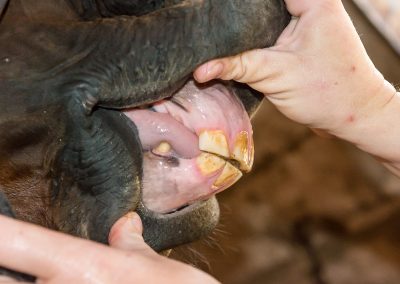

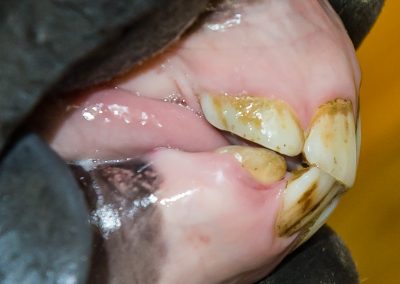
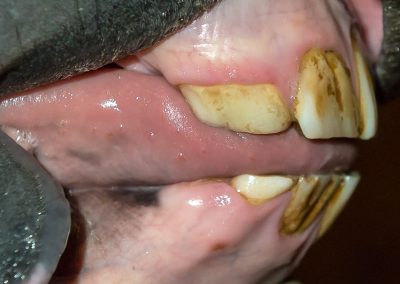
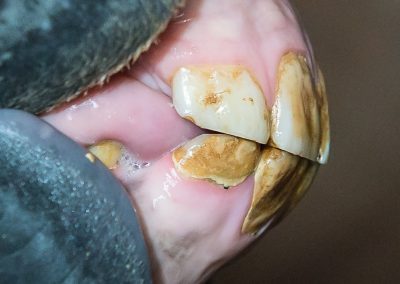
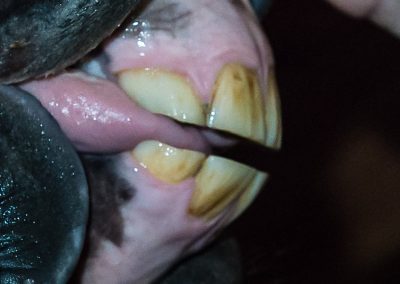
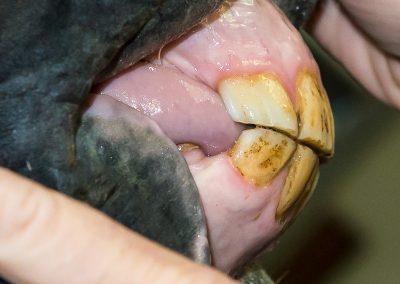


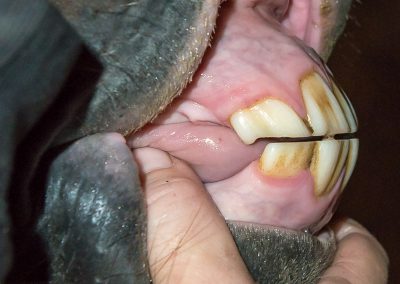
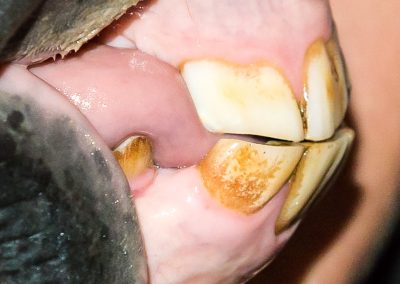


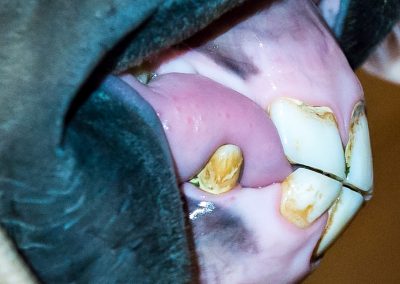
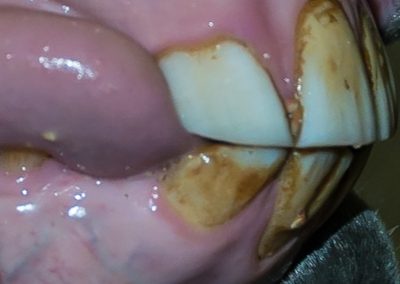
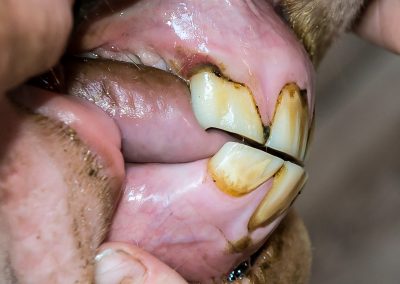

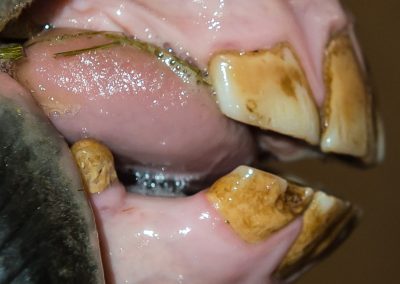
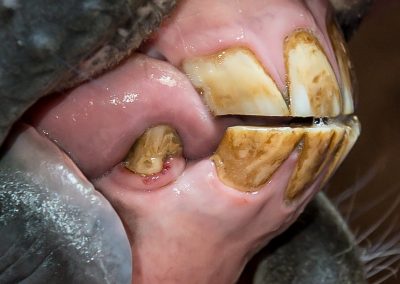







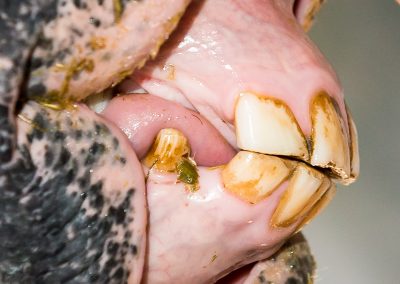

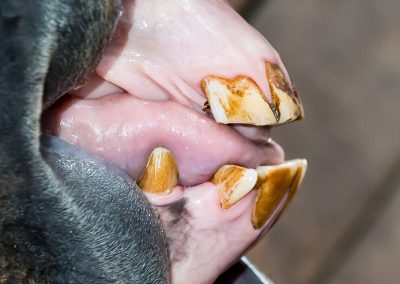
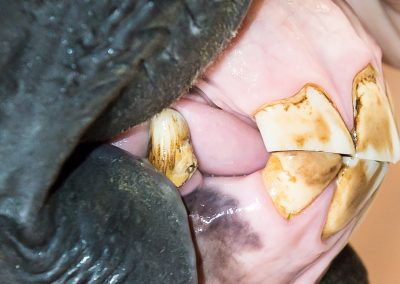
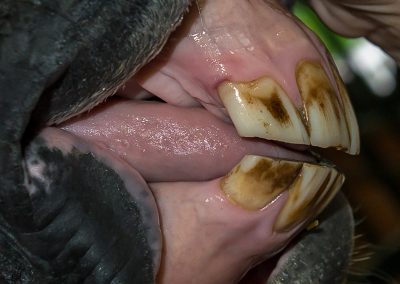

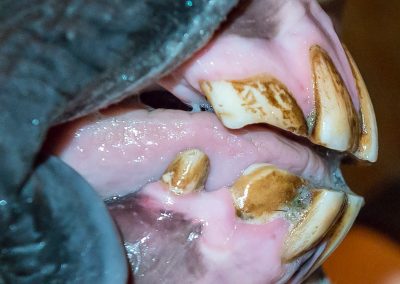

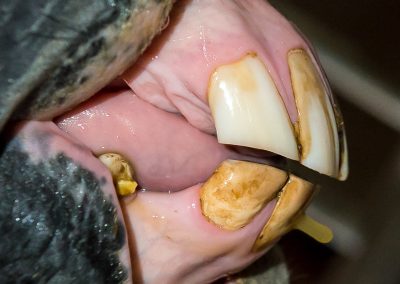

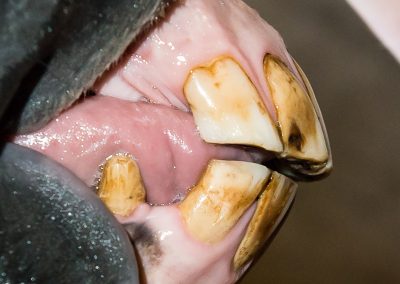
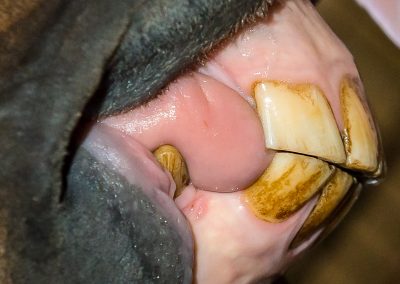

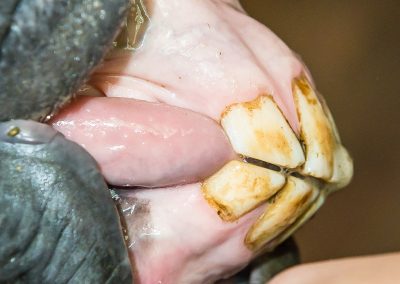

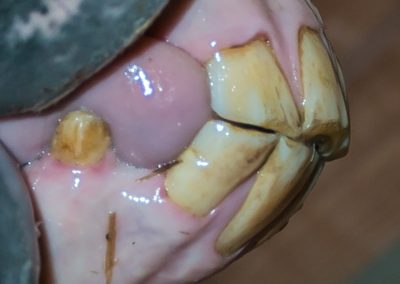





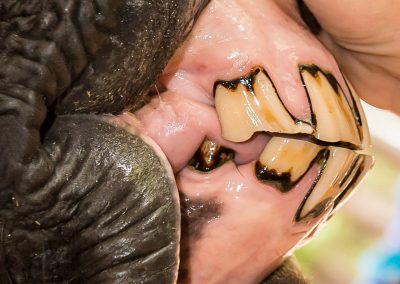
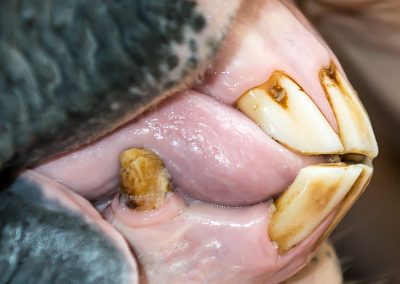


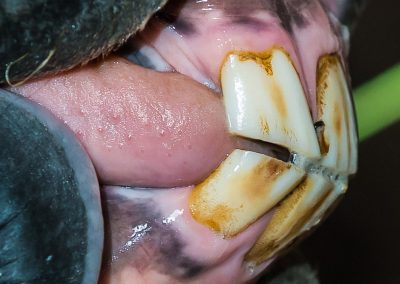



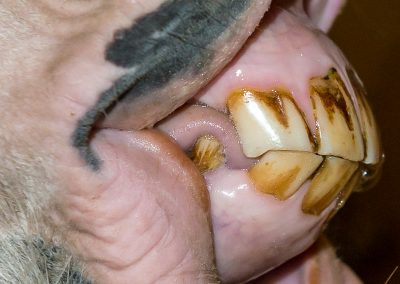



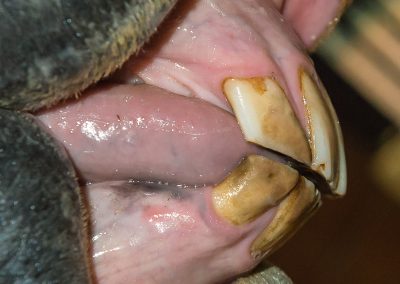

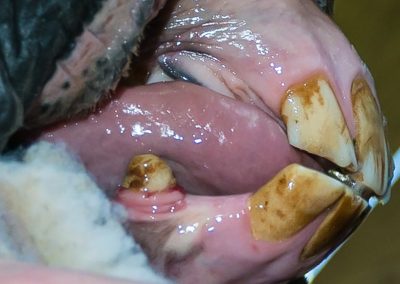


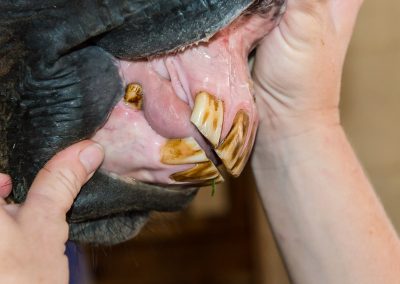

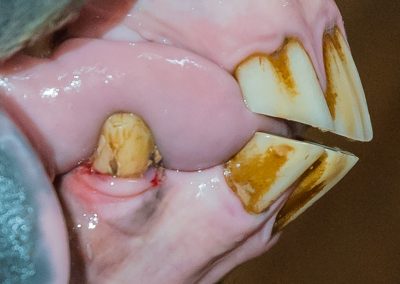
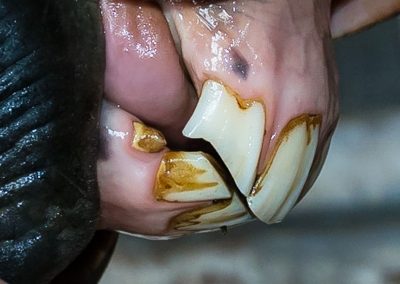

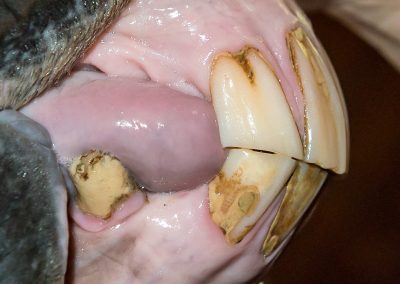
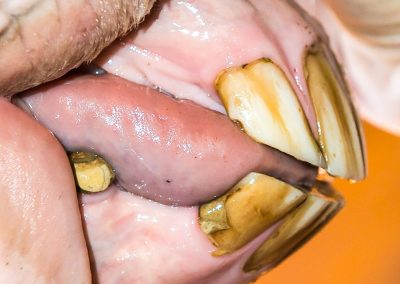
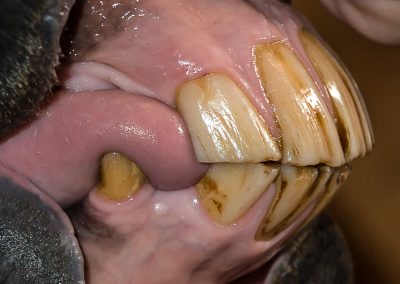
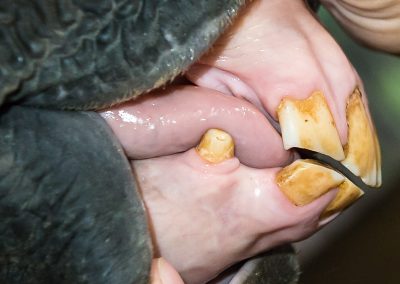
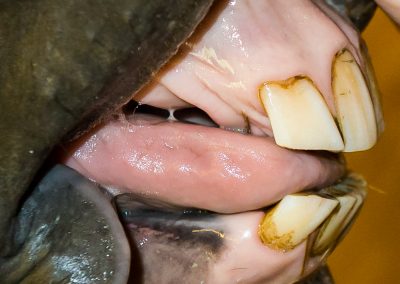



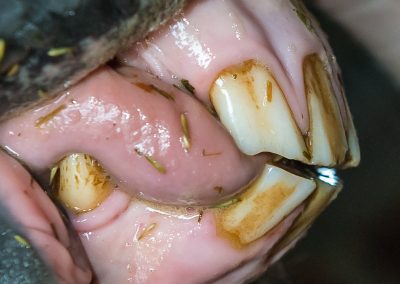
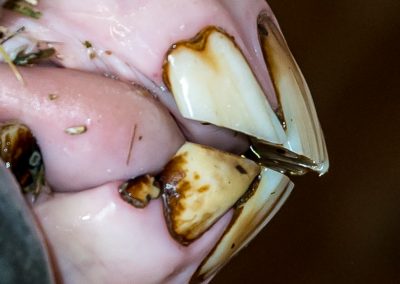





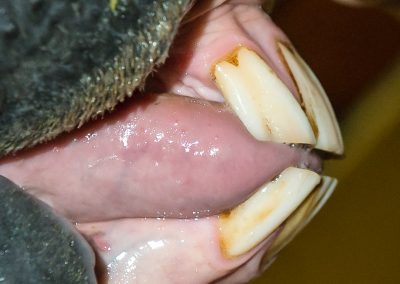
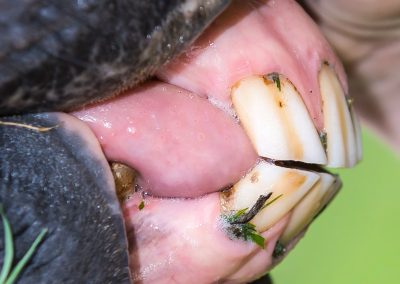
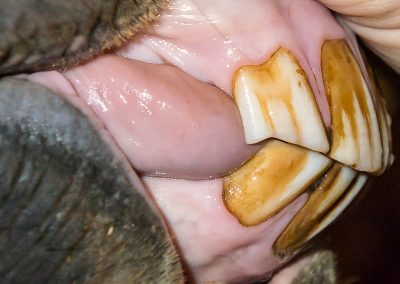


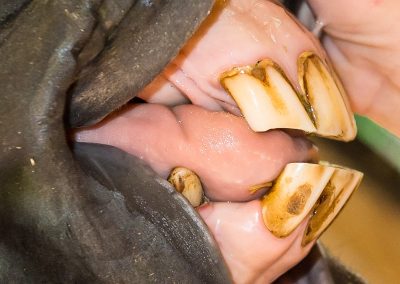
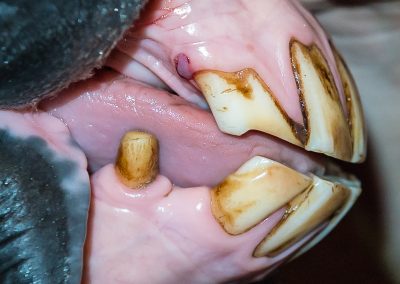
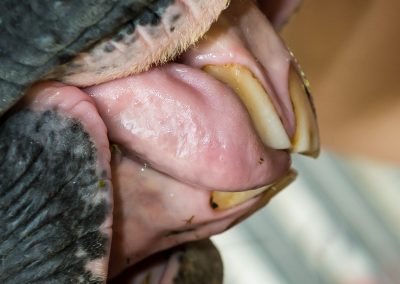


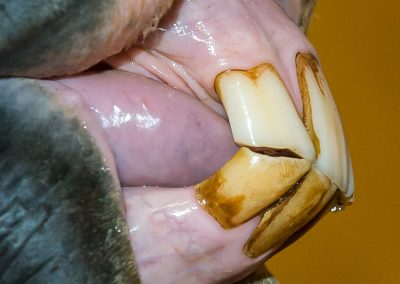
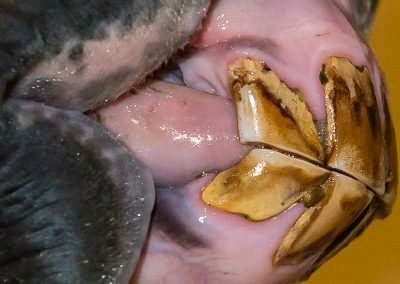

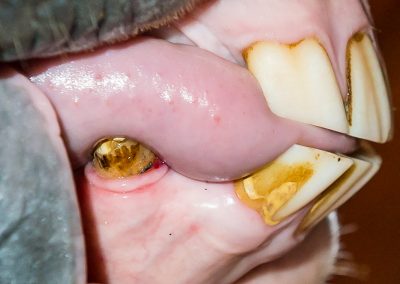


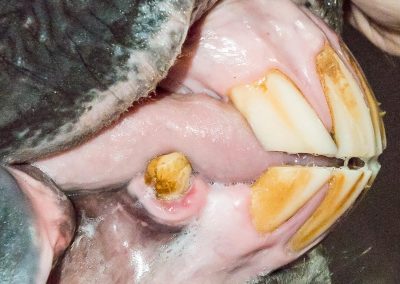






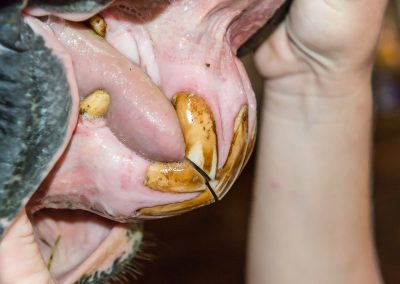

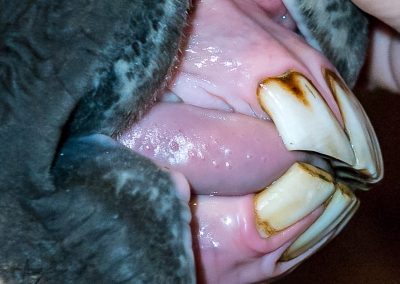


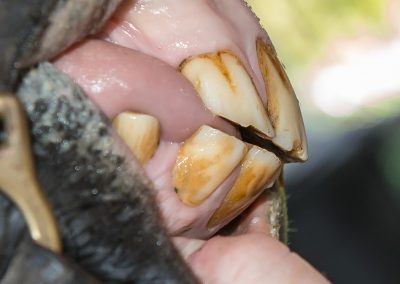





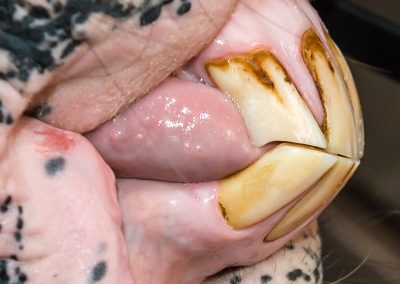
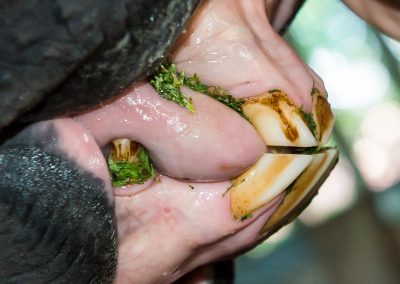




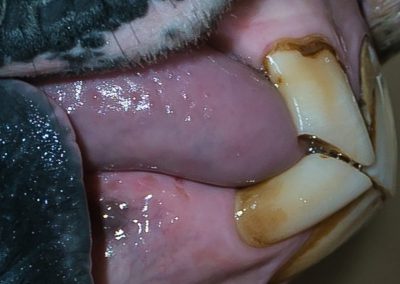






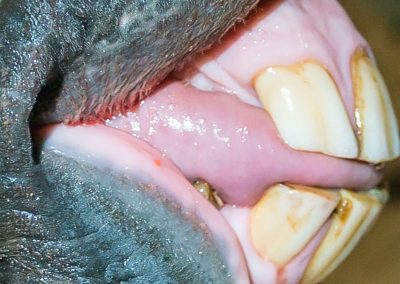
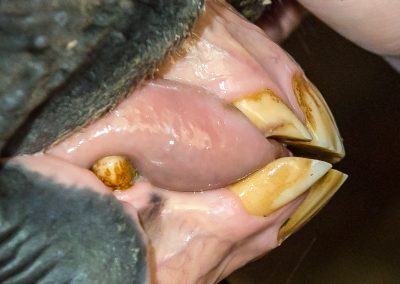






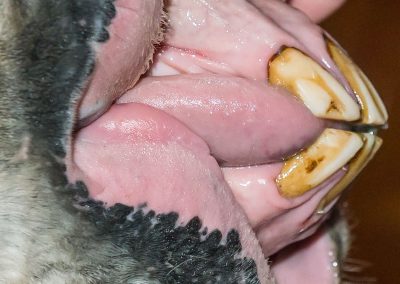
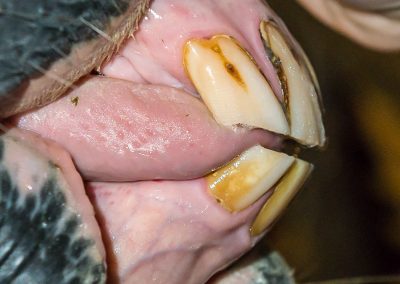


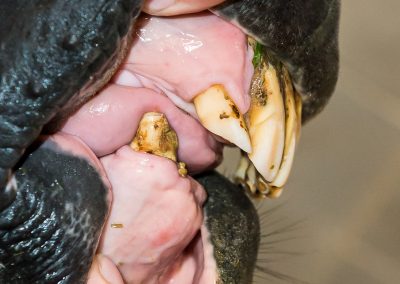


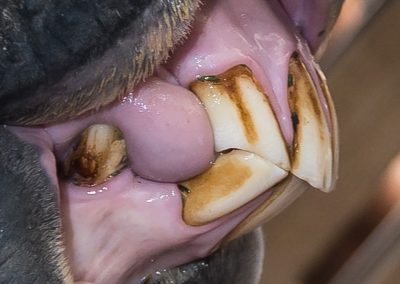
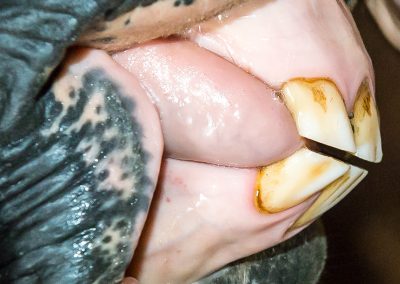







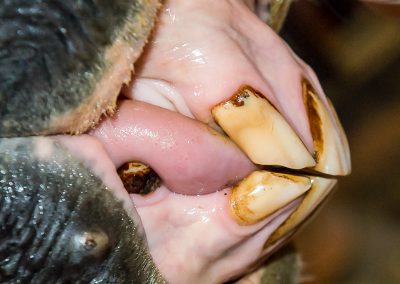




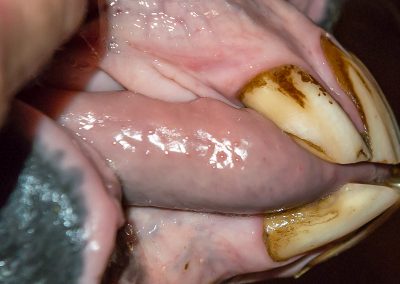
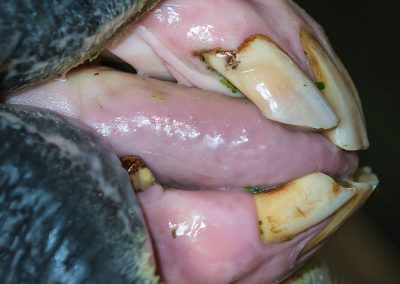

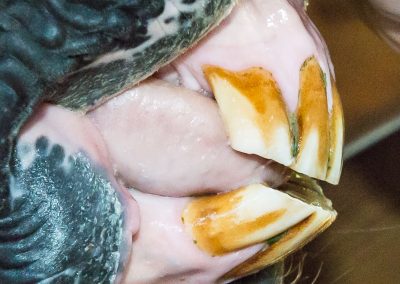

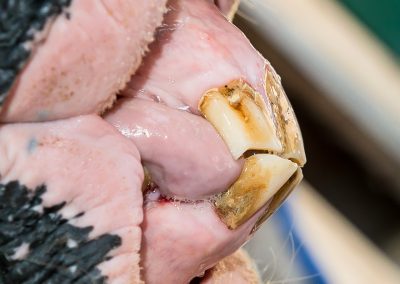

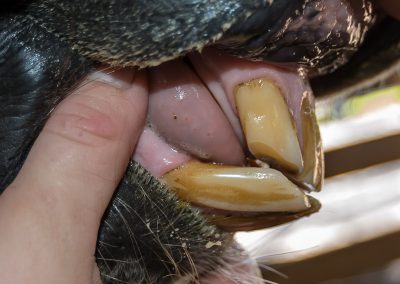



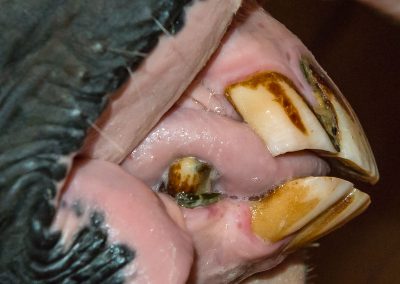

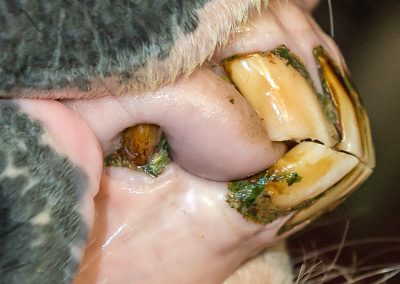

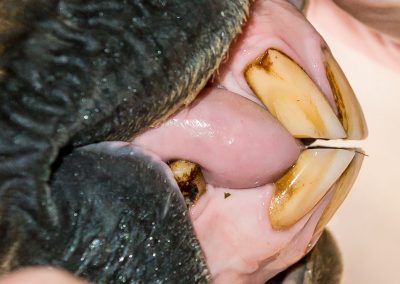


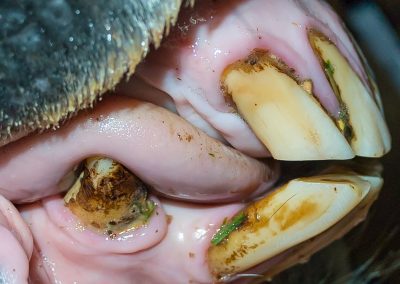
Responses